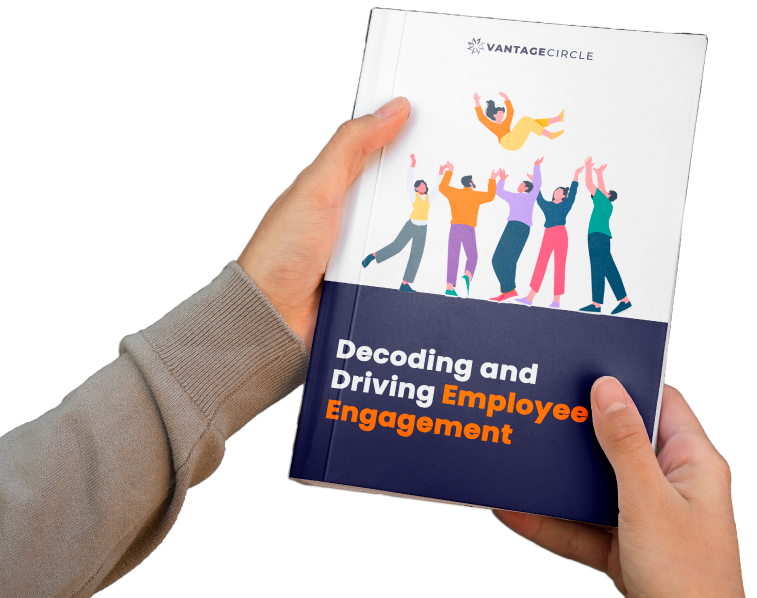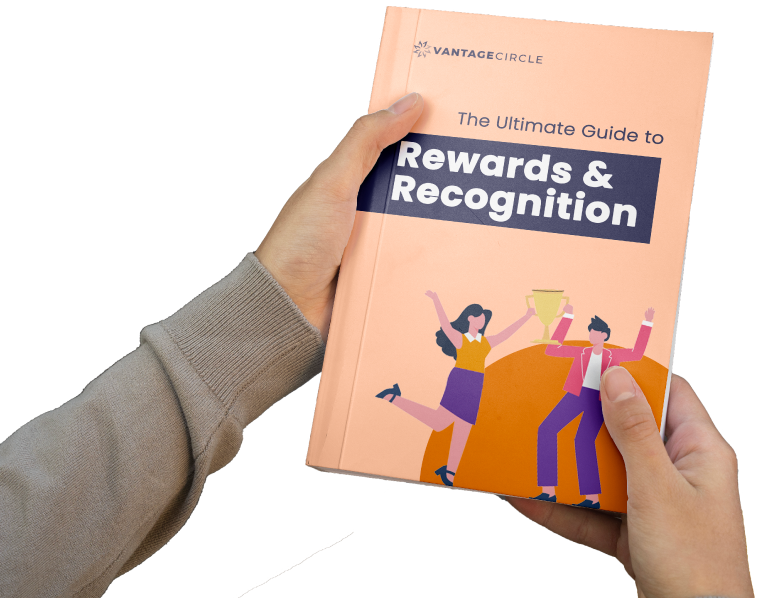How to Design a Reward System for Employees (Step-by-Step Guide)
Let’s be honest, keeping employees motivated isn’t just about free coffee and the occasional pizza party. While free snacks and casual Fridays are nice, they’re not enough to drive long-term employee engagement or loyalty.
Here’s a stat that might surprise you: 85% of employees say they feel more motivated to do their best work when they’re recognized for their efforts. Yet only 1 in 3 U.S. workers report receiving recognition in the past week. That’s a huge gap, and it’s one that can cost businesses dearly in terms of productivity, retention, and morale.
So how do you create a reward system that actually works? One that’s not just a checkbox on an HR to-do list but a meaningful way to inspire and retain top talent? Designing an effective reward system isn’t just about handing out bonuses or gift cards. It’s more about making employees feel seen, appreciated, and motivated to keep pushing forward.
In this step-by-step guide, I’ll walk you through the essential steps of creating a program that works for your organization. So, let’s get started!
Why Implement an Employee Reward System?
We all have probably heard that a simple “thank you” can go a long way, but did you know that a well-thought-out reward system can completely transform your workplace.
Simply put, recognition isn’t just a feel-good practice; it’s a business advantage. Here’s why it matters:
Increased Employee Engagement
People thrive where they feel valued. When employees know that their hard work can lead to meaningful reward, they are naturally driven to perform better. They are more likely to be invested in their work and contribute proactively. Thus, increasing the engagement level of the organization.
Improved Performance and Productivity
Think of the reward system as a fuel for your team’s drive. When employees see a direct link between their efforts and meaningful rewards, they become more engaged. And the numbers back it up: A Gallup study found that highly engaged teams show 21% greater profitability, and 17% higher productivity compared to their disengaged counterparts.
Higher Employee Retention Rates
Did you know replacing an employee can cost up to 2x their annual salary? And in today’s job market, if employees don’t feel valued, they won’t stick around.
So, if you want to keep your employees from walking out the door and save yourself the cost of hiring their replacements, a solid reward system is a must. Because let’s face it loyalty isn’t automatic, it’s earned.
Positive Company Culture
What if your workplace felt less like a job and more like a team rallying behind a shared mission? A well-crafted reward system does just that. It creates a culture where people cheer each other instead of competing for the spotlight.
Attract Top Talent
Take a moment to reflect on what your organization can offer that others can’t. Sometimes the real competitive edge isn’t just about salaries or perks, it’s about building a reputation that sets your company apart.
With a reputation for recognizing and appreciating employees, you can create a workplace where people feel valued, motivated, and inspired to give their best. When people know their hard work won’t go unnoticed, they will want to join a company that truly values their contributions.
Key Steps to Designing Your Reward System
1. Define Your Objectives
Clearly define your objectives. What’s the ultimate goal of your reward system? Are you looking to boost sales or reduce employee turnover? Without a clear purpose, your efforts may fall flat.
For instance, if you’re aiming to reduce absenteeism, consider rewards that promote work-life balance. By aligning your reward system with your business objectives, you ensure that every incentive drives measurable results.
2. Understand Your Employees
To design a reward system that truly works, you need to understand what your team values most. What inspires one person might not resonate with another. To understand this, you need to conduct pulse surveys, host focus groups, or have one-on-one conversations to gather insights.
A system that reflects your employees’ preferences will not only boost engagement but also foster loyalty and satisfaction.
3. Determine the Types of Rewards
To cater to the diverse needs and preferences of your team, offer a mix of monetary and non-monetary incentives. Research shows that a well-balanced combination of both can lead to higher engagement and sustained motivation.
Here’s how you can strike the right balance:
Monetary Rewards
-
Performance Bonuses: Implement targeted bonuses tied to specific, measurable achievements. Consider both individual and team-based metrics, ensuring the bonus structure promotes collaboration while recognizing exceptional contributions.
-
Salary Increases: Design a transparent salary progression framework that rewards high performance and skill development. Regular salary reviews should reflect both market rates and individual growth.
-
Profit Sharing: Create a direct link between company success and employee compensation through profit-sharing initiatives. This helps employees understand their impact on business outcomes.
-
Flexible Spending Options: Offer customizable rewards like gift cards, experience vouchers, or wellness allowances that let employees choose benefits meaningful to them.
Non-Monetary Rewards
-
Public Recognition: Acknowledge achievements in meetings, emails, or social media to boost morale. A simple shoutout from leadership, managers or peers can make employees feel truly valued.
-
Extra Vacation Time: Rewarding high performance with additional vacation days gives employees a well-earned break to relax and recharge.
-
Professional Development Opportunities: Provide access to skill-building courses, certifications, or industry conferences to strengthen your workforce with new expertise.
-
Flexible Work Arrangements: Offer remote work options or flexible hours to support work-life balance. This flexibility fosters trust and leads to higher job satisfaction.
-
Company Swag: Branded merchandise can be a fun and tangible way to show appreciation.
4. Set Clear Criteria for Earning Rewards
Having a reward system without clear guidelines is a recipe for disaster. If employees don’t know what they need to do to earn rewards, it can lead to confusion, frustration, and even resentment. That’s why it’s so important to lay out transparent, measurable, and realistic criteria that tie directly to your goals.
For instance, if you’re rewarding sales performance, don’t just say, “Do a great job!” Instead, set a specific target like, “Hit 100% of your quarterly sales goal.”
When the criteria are clear, everyone knows what’s expected, and it creates a sense of fairness.
5. Communicate the Program Effectively
Even the most amazing reward system can fail if people don’t know how it works. You need to help them understand what kinds of rewards are up for grabs, what they need to do to earn them, and how the whole system operates. The more informed your employees are, the more motivated they’ll be to participate.
Moreover, don’t just rely on one way to share the info, either. Spread the word through emails, team meetings, posters, or even a dedicated spot on your company intranet.
6. Implement and Monitor
Getting your reward system up and running is just the beginning. To ensure its long-term success, you need to monitor its effectiveness and listen to what your employees have to say.
Are the rewards actually motivating people to do their best? Do employees feel like the rewards are worth the effort? Ask these key questions and gather feedback to improve the program as you go. A reward system that grows and adapts with your team’s changing needs and preferences is one that stays effective and meaningful.
7. Evaluate and Adjust
Lastly, don’t just set up your reward system and forget about it. Keep an eye on how it’s doing over time. Is it actually keeping employees engaged? Are the rewards inspiring the kind of behaviors you’re aiming for? These are the questions you’ll want to ask regularly.
Evaluate the input and see if the system is hitting the mark or falling short. A little adjustment here and there can go a long way in keeping your reward system fresh and relevant for everyone.
Examples of Successful Employee Reward Systems
Google's Peer Bonus Program
Employees can nominate colleagues for spot bonuses based on their contributions to a project. Selected winners are then awarded a prepaid debit card along with an official award letter.
This peer-to-peer system has proven highly effective in boosting morale and encouraging collaborative behavior across teams.
Vantage Circle's Points-Based Reward Program
The company uses an R&R platform where employees earn points for achievements, milestones, and contributions. These points can be redeemed for a wide range of rewards including gift cards, merchandise or experiences, giving employees the freedom to choose rewards to their liking.

Source: Vantage Rewards
Beyond just earning and redeeming points, the program offers several additional capabilities such as peer-to-peer recognition, with real-time recognition.
Additionally, it seamlessly integrates with workplace tools like Microsoft Teams and Slack, making recognition effortless within daily workflows.
DHL's Recognition Program
DHL’s "I’m On It" recognition program celebrates employees for their outstanding contributions to the company. The program features three award levels—Bronze, Silver, and Gold. Each award level comes with its own merchandise and travel rewards. This tiered system not only acknowledges hard work but also motivates employees to strive for excellence.
Conclusion
The best reward systems are the ones that truly connect with your organization and its people. When you design rewards based on employee feedback and preferences, you create a workplace where engagement and loyalty naturally thrive.
So, take a moment to evaluate your current reward strategy and build a system that truly resonates.
















